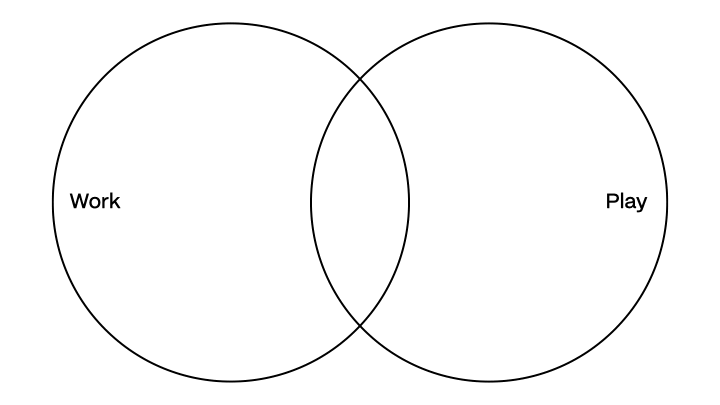’25
Why We Need Visionaries. And the Importance of a Multidisciplinary Approach in the Age of AI.
5/
21
“To know is to know that you know nothing. That is the meaning of true knowledge.”
— Socrates
In the age of artificial intelligence, this kind of humility is no longer optional. It is essential.
As AI moves from novelty to necessity in every field, the way we define expertise, creativity, and leadership is changing. It’s true. It is tempting to believe the future belongs to those who master the latest tools or specialize in a single domain.
But history and the realities of today’s challenges suggest otherwise. If anything, the rise of AI makes the need for visionaries and for multidisciplinary thinking more urgent than ever.
Innovation rarely comes from those who stay within one field. Progress is usually driven by people who can connect multiple views, perspective, and ideas. Ideas that may never meet, but are profound together. The most lasting breakthroughs come from those who recognize art, science, technology, and design as parts of a larger, interconnected set of systems.
Leonardo da Vinci worked between painting, engineering, and anatomy. His notebooks were filled with designs for flying machines, military weapons, and anatomical studies.1 His Mona Lisa, in an era of solemn portraits, offered a smile that was both peculiar, and groundbreaking. It simply invited viewers to see humanity in a new way.2

Da Vinci’s true genius lay in seeing how one field could open doors in another.

Centuries later, Charles and Ray Eames brought this approach to the modern era. Their molded plywood chair was a breakthrough in manufacturing, and material science, making mass production of organic forms possible.3 Their educational film, Powers of Ten, helped viewers zoom out from a picnic in Chicago to the edge of the universe, and back into a single atom. This illustrates how design, science, and perspective are always connected.4
Ray and Charles Eames understood the power of accessibility, so much so “the best for the most for the least” would be their guiding design principle.
Dieter Rams, working at Braun, elevated the idea of considered design. His works, such as the SK4 radio and TP 1 , a Portable Transistor Radio and Phonograph, emphasized clarity, simplicity, and function.5 “Less, but better” became his guiding principle, shaping not only objects, but the way we think about design’s purpose in daily life.6
Steve Jobs, inspired by both Rams and the Eameses, helped create a culture at Apple that married ambition with restraint. By bringing typography to the Macintosh, after taking a calligraphy class, he made computers personal, and expressive.7 The iPod became a musicphile’s dream, a portable sound device that could house 1,000 songs in your pocket. Sir Jony Ive, Apple’s Chief Design Officer at the time, was deeply inspired by Rams. He also designed the iPhone, which brought industrial design, engineering, precision, and craft together, proving that multidisciplinary collaboration can transform not just products, but the way we live.8

By merging music, technology, sports, and branding, Dr. Dre helped redefine what products mean in our culture. How we connect through music and sound.
In 2014, Apple acquired Beats by Dre, the audio company co-founded by Dr. Dre and Jimmy Iovine. Dr. Dre exemplifies the power of combining creative disciplines. As a producer, rapper, and entrepreneur, he shaped the sound of hip hop and helped launch artists like Snoop Dogg, and Eminem.
With Beats, he translated his deep understanding of music into product design. The headphones became more than a technical achievement; they became a symbol of culture, style, sports, sound, and music.
Nowhere is the intersection of a multidisplinary approach more real than in the rise of generative AI. Take OpenAI’s tools like ChatGPT, DALL-E, and Sora, which let users generate language, images, and even video from simple text prompts.9 These platforms were built by teams of researchers, artists, engineers, and ethicists working together to balance technology, and creativity. The real breakthrough is not just in the underlying models, but in how anyone, from filmmakers to designers to educators, and yes, even writers, can collaborate with AI to explore ideas, prototype new work, and stretch their creative limits.10 The prompt becomes the new paintbrush, camera, or musical instrument.
With Beats, he translated his deep understanding of music into product design. The headphones became more than a technical achievement; they became a symbol of culture, style, sports, sound, and music.
Nowhere is the intersection of a multidisplinary approach more real than in the rise of generative AI. Take OpenAI’s tools like ChatGPT, DALL-E, and Sora, which let users generate language, images, and even video from simple text prompts.9 These platforms were built by teams of researchers, artists, engineers, and ethicists working together to balance technology, and creativity. The real breakthrough is not just in the underlying models, but in how anyone, from filmmakers to designers to educators, and yes, even writers, can collaborate with AI to explore ideas, prototype new work, and stretch their creative limits.10 The prompt becomes the new paintbrush, camera, or musical instrument.
Of course, the rapid rise of AI brings new risks alongside new opportunities. Recent research suggests that relying too heavily on AI can lead to “cognitive atrophy,” weakened critical thinking, memory, and problem-solving skills, as humans begin to offload too much of their own creative, and intellectual work to machines.11
If AI becomes just a shortcut, there is a danger that we lose the very mental muscles that make innovation, and insight possible. The opportunity now belongs to us. Creativity has never been more open, or more complex. We are invited, and perhaps required, to form new connections, blending code and craft, design and science, art and engineering. AI is not the endpoint, but another instrument.
If AI becomes just a shortcut, there is a danger that we lose the very mental muscles that make innovation, and insight possible. The opportunity now belongs to us. Creativity has never been more open, or more complex. We are invited, and perhaps required, to form new connections, blending code and craft, design and science, art and engineering. AI is not the endpoint, but another instrument.
Our role is to shape AI with intention, curiosity, and most of all care.
The work ahead will be built on balance, where structure supports exploration, and human perspective guides technology to serve people, not replace them. Multidisciplinary teams, crossing fields and collaborating12 even with new forms of intelligence, can create systems that adapt, endure, and connect.
AI, in the hands of creatives, becomes more than a tool. It becomes a collaborator, someone to bounce ideas with. The ability to engineer a prompt, combining ideas, asking new questions, iterating with intention. This lets artists, designers, and thinkers move beyond finite time constraints. For those who practice across disciplines, AI is a natural extension, opening up new ground for invention, and expression. But it is also a call to stay active in the process, to question, to edit, to remix, and to build practices that keep our own cognitive skills sharp.
AI, in the hands of creatives, becomes more than a tool. It becomes a collaborator, someone to bounce ideas with. The ability to engineer a prompt, combining ideas, asking new questions, iterating with intention. This lets artists, designers, and thinkers move beyond finite time constraints. For those who practice across disciplines, AI is a natural extension, opening up new ground for invention, and expression. But it is also a call to stay active in the process, to question, to edit, to remix, and to build practices that keep our own cognitive skills sharp.
Our world needs more than fast solutions. It needs ideas and systems that last, evolve, and enrich people’s lives. The future belongs to visionaries who move between worlds while understanding the balance between changing the world, and caring for the world. And who see the positives in partnering with both human, and machine,13 without losing sight of what makes us human in the first place.
![]()

SOURCE MATERIAL—DEEPER DIVE
1. British Library. "Leonardo da Vinci Notebook." https://imagesonline.bl.uk/asset/4200
2. Jason Daley. "So Is ‘Mona Lisa’ Smiling? A New Study Says Yes" Smithsonian Magazine, Mar. 2017, https://www.smithsonianmag.com/smart-news/is-the-mona-lisa-smiling-new-study-180962580/
3.Museum of Modern Art. "Eames Molded Plywood Chair." https://www.moma.org/collection/works/1971
4. Eames Office. "Powers of Ten." www.eamesoffice.com/the-work/powers-of-ten
5. Vitsoe. "About Dieter Rams." www.vitsoe.com/gb/about/dieter-rams
6. Vitsoe. "Good Design." www.vitsoe.com/gb/about/good-design
7. Jobs, Steve. “Stanford Commencement Address, 2005.” Stanford University, 14 June 2005, news.stanford.edu/2005/06/14/jobs-061505
8. Spector, Joseph. "How Steve Jobs Changed the World." Business Insider, 6 Oct. 2011, Business Insider Article Archived
9. Emma Roth, Kylie Robison, and Richard Lawler "OpenAI has finally released Sora" The Verge, 9 Dec. 2024, https://www.theverge.com/2024/12/9/24317092/
10. Interaction Design Foundation - IxDF. “What is AI-Generated Art?” Interaction Design Foundation - IxDF. 22 May. 2025 https://www.interaction-design.org/literature/topics/ai-generated-art
11. Cox, Joseph. “Microsoft Study Finds AI Makes Human Cognition ‘Atrophied’ and Unprepared.” 404 Media, 17 May 2024. www.404media.co/microsoft-study-finds-ai-makes-human-cognition-atrophied-and-unprepared-3/
12. Paul Leinwand, Mahadeva Matt Mani and Blair Sheppard "Reinventing Your Leadership Team" Harvard Business Review, Jan. 2022, https://hbr.org/2022/01/reinventing-your-leadership-team
13. H. James Wilson and Paul R. Daugherty "Collaborative Intelligence: Humans and AI Are Joining Forces" Harvard Business Review, July. 2018, https://hbr.org/2018/07/collaborative-intelligence-humans-and-ai-are-joining-forces
TRANSPARENCY & COLLABORATION NOTE
This essay was developed with the assistance of AI (more specifically with Open AI’s ChatGPT-4), with hundreds of prompts, and revisions shaping its direction and language.
AUTHOR’S NOTE
Ryan Lawrence is a multidisciplinary art director and designer based in Los Angeles. He leads leads a design practice called Work and Play; grounded in rhythm, modularity, and considered, human-centered design.
